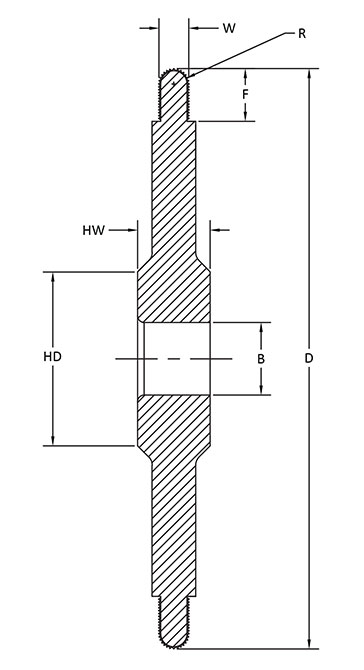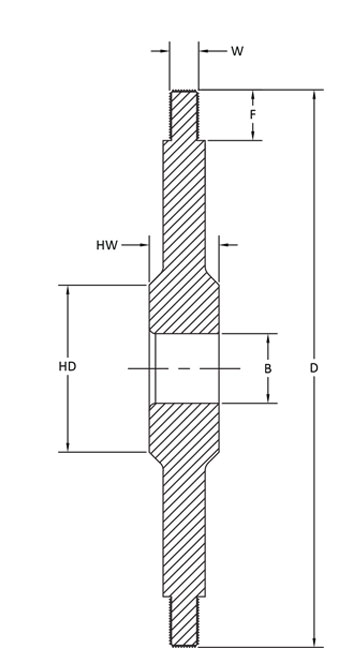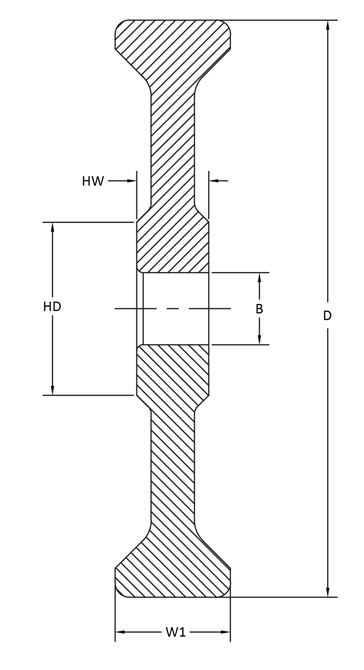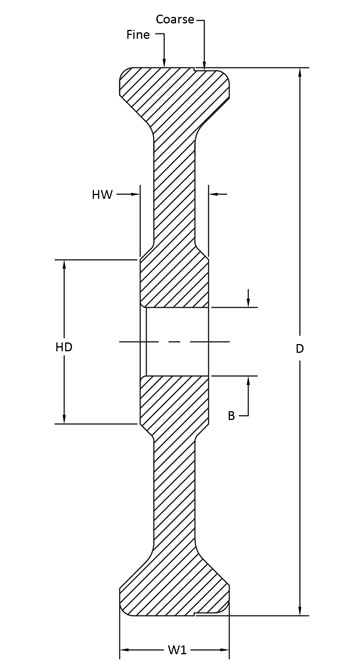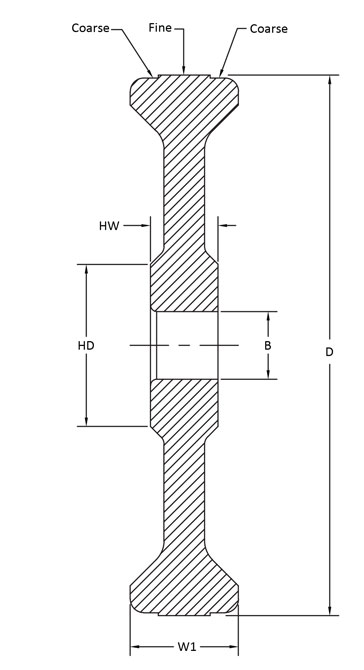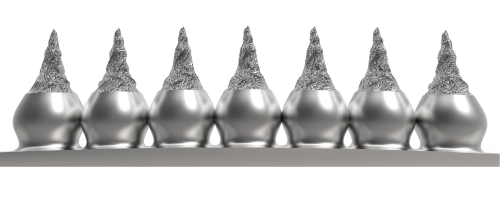
RUBBERHOG ORIGINAL
Advanced Carbide Abrasive Technology since 1957.
Oliver Carbide is the World’s premier manufacturer of abrasive grinding wheels utilizing nickel-brazed tungsten carbide and have ensure over 60 years of dedication and knowledge goes into every wheel.
Rubberhog Original uses the ‘SSG’ coating, consisting of very sharp conical teeth, arranged randomly on the wheel surface. Some customers find that the random positioning of SSG teeth helps prevent “tracking”, assuring an excellent surface finish on critical products. The random tooth arrangement also makes SSG usually the best choice for grinding soft materials, in situations where the grinding wheel spindle operates only in the low surface-speed range typical of vitrified “stone” wheels. SSG coatings are described by a 3-digit numbering system, with larger numbers “coarser,” and smaller numbers “finer.”

RUBBERHOG EXTREME
Rubberhog extreme uses the ‘”MCM” coating. MCM is constructed of precisely-shaped conical teeth, arranged on the wheel in a regular, alternating left-right pattern. MCM teeth have a more open structure, which greatly reduces heat, smoke and power consumption. This open structure minimizes chatter and wheel loading, making MCM the best choice when grinding hard materials. MCM teeth provide superior service life, which is especially noticeable in production grinding of tough and highly-filled materials. MCM teeth are capable of generating a smooth finish, even on soft material, but results with MCM on soft materials can be more sensitive to having sufficient wheel speed than with SSG. On soft materials, MCM performs best if operated in a surface-speed range significantly higher than that typical of vitrified “stone” wheels. MCM coatings are described by a 2 or 3-digit numbering system, with larger numbers “coarser,” and smaller numbers “finer.”

RUBBERHOG CRUSHED
Rubberhog SSG and MCM coatings offer the best performance for most roller grinding applications, especially those involving traverse grinding. However, there are a number of rubber-grinding applications where a simple brazed carbide “Grit” coating can be more effective. Wheels for cutting very narrow grooves, convex shapes, or complex profiles are often best made with a crushed Grit coating. The Rubberhog Grit coating is also very rugged, and is not damaged easily. This can make it more effective for end trimming of rollers, where the wheel is likely to contact the steel roller core. The crushed grit coating sizes are called out by grit size numbers similar to those used for sandpaper or “stone” wheels, with larger numbers finer, and smaller numbers coarser. Please contact your Oliver customer service representative for further details when considering a grooving or profile application.
COARSENESS SIZE
Selection of the coarseness size is primarily based on the hardness range of the material to be ground. Harder materials grind better with coarser wheels, while softer materials generally require finer wheels. If you must grind a wide range of material hardness with just a single wheel, select a general-purpose coarseness size appropriate for the range of hardness you will grind. For maximum effectiveness, Dual-Grit or Triple-Grit wheels are usually the best choice when grinding new products with overbuild. To help you make the best selection most easily and conveniently, the data collection forms for wheel ordering show the options and recommended coatings for various grinding applications.
GRINDING WHEEL NEGLECT CAN BE DEVASTATING
HOW TO PROPERLY MAINTAIN GRINDING WHEELS
At Oliver Carbide Products, we are dedicated to helping you get optimum performance from your Rubberhog grinding wheels. Our booklet, How Worn is Worn Out*, describes in detail a system for better monitoring grinding wheel condition. By following this system, you can maximize grinding efficiency and avoid the disastrous problems that worn grinding wheels can cause.
Among the elements of this system, simple close visual inspection of the wheel surface is probably the easiest to apply and is very effective. The information below is intended as a shopper reference for inspecting wheel condition.
INSPECTION OF WHEEL CONDITION
Wheel wear is notable by the rounding or “blunting” of the conical teeth. Wear occurs most rapidly at the corner radii where the wheel sides and OD blend, and where the fine coating starts at the “step” between coarse and fine coatings on multiple-grit wheels. With the machine power locked out, rotate the wheel slowly by hand while inspecting the surface with a simple magnifier such as a folding “linen- tester” or a magnifying visor. The teeth, when new, are very sharp, with well-defined tips. Over time, dulling produces blunt-looking tips. The dulling is usually accompanied by an obvious increase in shininess, and the teeth will exhibit very little bite when stroked with your fingertips. Usually the change in bite is highly directional; running a fingertip in the direction of rotation, and then against it, will show a marked difference in aggressiveness. The photos below show magnified views of both MCM and SSG teeth in new and worn condition.
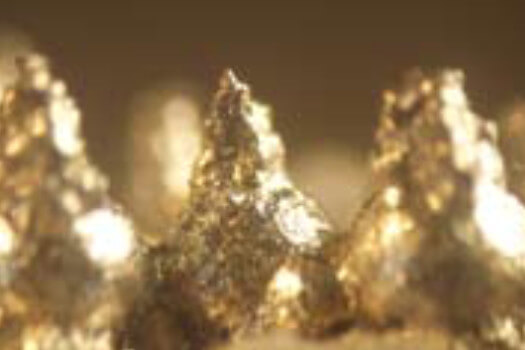
NEW SSG TEETH

WORN SSG TEETH
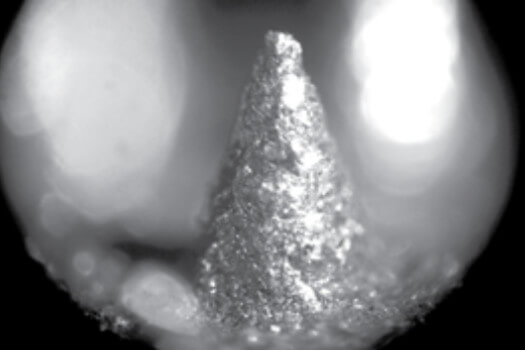
NEW MCM TEETH
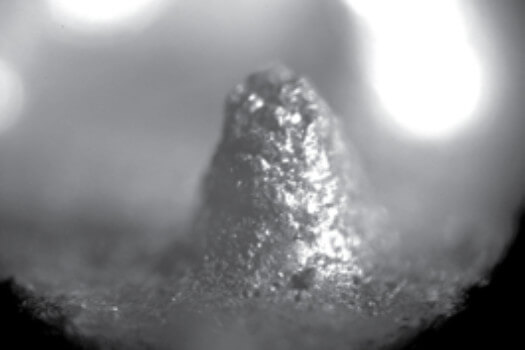
WORN MCM TEETH
Design your wheel
